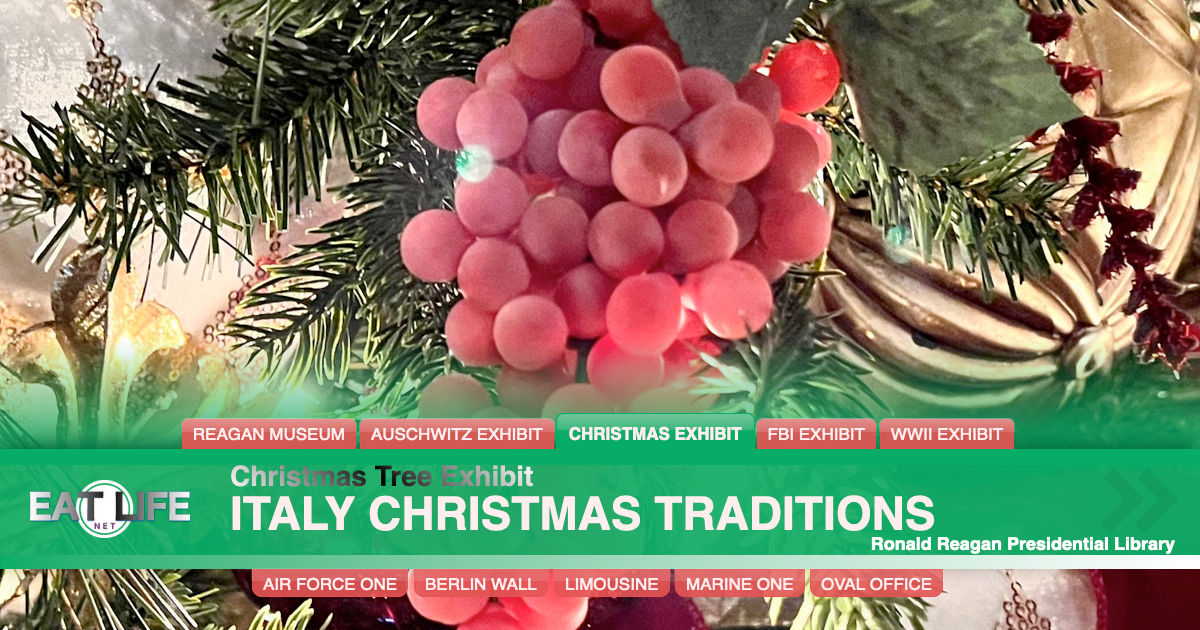CHRISTMAS:
La Befana was a widowed, childless woman when the Three Kings passed on their way to see the Christ child. When they asked her the way to Bethlehem she was busy cleaning and sent them away. Realizing her mistake, she left to search for the Baby Jesus. To this day she is still searching going from house to house on Epiphany, January 6, leaving a gift for good children.


| HOW TO SAY MERRY CHRISTMAS: | |
|---|---|
| In Italian | Buon Natale |


WHYCHRISTMAS.COMMerry Christmas
- In Italian it's is Buon Natale
- In Sicilian it's Bon Natali
- In Piedmontese it's Bon Natal
- In Ladin it's Bon/Bun Nadel
One of the most important ways of celebrating Christmas in Italy is the Nativity crib scene. Using a Nativity scene to help tell the Christmas story was made very popular by St. Francis of Assisi in 1223 (Assisi is in mid-Italy). The previous year he had visited Bethlehem and saw where it was thought that Jesus was born. A lot of Italian families have a Nativity scene in their homes.
The city of Naples in Italy is world famous for its Nativity scenes. These are known as 'Presepe Napoletano' (meaning Neapolitan Nativity/cribs scenes). The first Nativity scene in Naples is thought to go back to 1025 and was in the Church of S. Maria del presepe (Saint Mary of the Nativity), this was even before St. Francis of Assisi had made Nativity scenes very popular!
Having Nativity scenes in your own home became popular in the 16th century and it's still popular today (before that only churches and monasteries had scenes). Nativity scenes are traditionally put out on the 8th December. But the figure of the baby Jesus isn't put into the crib/manger until the evening/night of December 24th!
Sometimes the Nativity scene is displayed in the shape of pyramid which can be meters tall! It's made of several tiers of shelves and is decorated with colored paper, gold covered pinecones and small candles. A small star is often hung inside the top of the pyramid/triangle. The shelves above the manger scene might also contain fruit, candy and presents.
One special thing about Neapolitan Nativity scenes, is that they always have extra 'every day' people and objects (such as houses, waterfalls, food, animals and even figures of famous people and politicians!). Naples is also the home to the largest Nativity scene in the world, which has over 600 objects on it!
In Naples there is a still a street of nativity scene makers called the 'Via San Gregorio Armeno'. In the street you can buy wonderful hand made Nativity scene decorations and figures - and of course whole scenes!
- Christmas Tress are also now popular in Italy, but only really since after World War II. In 1982, Pope John Paul II, who was Polish, started the tradition of having a Christmas Tree displayed next to the Nativity Crib on St Peter’s Square in the Vatican. The crib scene at the Vatican has seventeen life size statues, nine of them date back to 1842. The tree at the Vatican is donated from a different Italian region or country in Europe every year.
- It's now traditional that Italians decorate their Christmas trees on 8th December (the feast of the Immaculate Conception). The tree then stays up until the Epiphany on 6th January.
- One old Italian custom is that children go out Carol singing and playing songs on shepherds pipes, wearing shepherds sandals and hats.
- On Christmas Eve, it's common that no meat (and also sometimes no dairy) is eaten. Often a light seafood meal is eaten and then people go to the Midnight Mass service. The types of fish and how they are served vary between different regions in Italy.
- During the Evening of Christmas Eve, the 1983 comedy film 'Trading Places' is always shown on Italian TV!
- When people return from Mass, if it's cold, you might have a slice of Italian Christmas Cake called 'Panettone' which is like a dry fruity sponge cake and a cup of hot chocolate! Here's a recipe for panettone. You can find out more about Christmas in Italy and Italian Christmas Recipes on this site (goes to another site).
- For many Italian-American families a big Christmas Eve meal of different fish dishes is now a very popular tradition! It's known as The Feast of the Seven Fishes ('Festa dei sette pesci' in Italian). The feast seems to have its root in southern Italy and was bought over to the USA by Italian immigrants in the 1800s. It now seems more popular in American than it is in Italy!
Common types of fish eaten in the feast include Baccala (salted Cod), Clams, Calamari, Sardines and Eel.
There are different theories as to why there are seven fish dishes eaten. Some think that seven represents the seven days of creation in the Bible, other say it represents the seven holy sacraments of the Catholic Church. But some families have more than seven dishes! You might have nine (to represent the Christian trinity times three), 13 (to represent Jesus and his 12 disciples) or 11 (for the 11 disciples without Jesus or Judas!)!
- The Christmas celebrations start eight days before Christmas with special 'Novenas' or a series of prayers and church services.
- Some families have a 'Ceppo' or Yule Log which is burnt through the Christmas season.
- Epiphany is also important in Italy. On Epiphany night, children believe that an old lady called 'Befana' brings presents for them. The story about Befana bringing presents is very similar to the story of Babushka. Children put stockings up by the fireplace for Befana to fill. In parts of northern Italy, the Three Kings might bring you presents at Epiphany, rather than Befana. On Christmas day 'Babbo Natale' (Santa Claus, but it translates as Father Christmas) also brings presents!

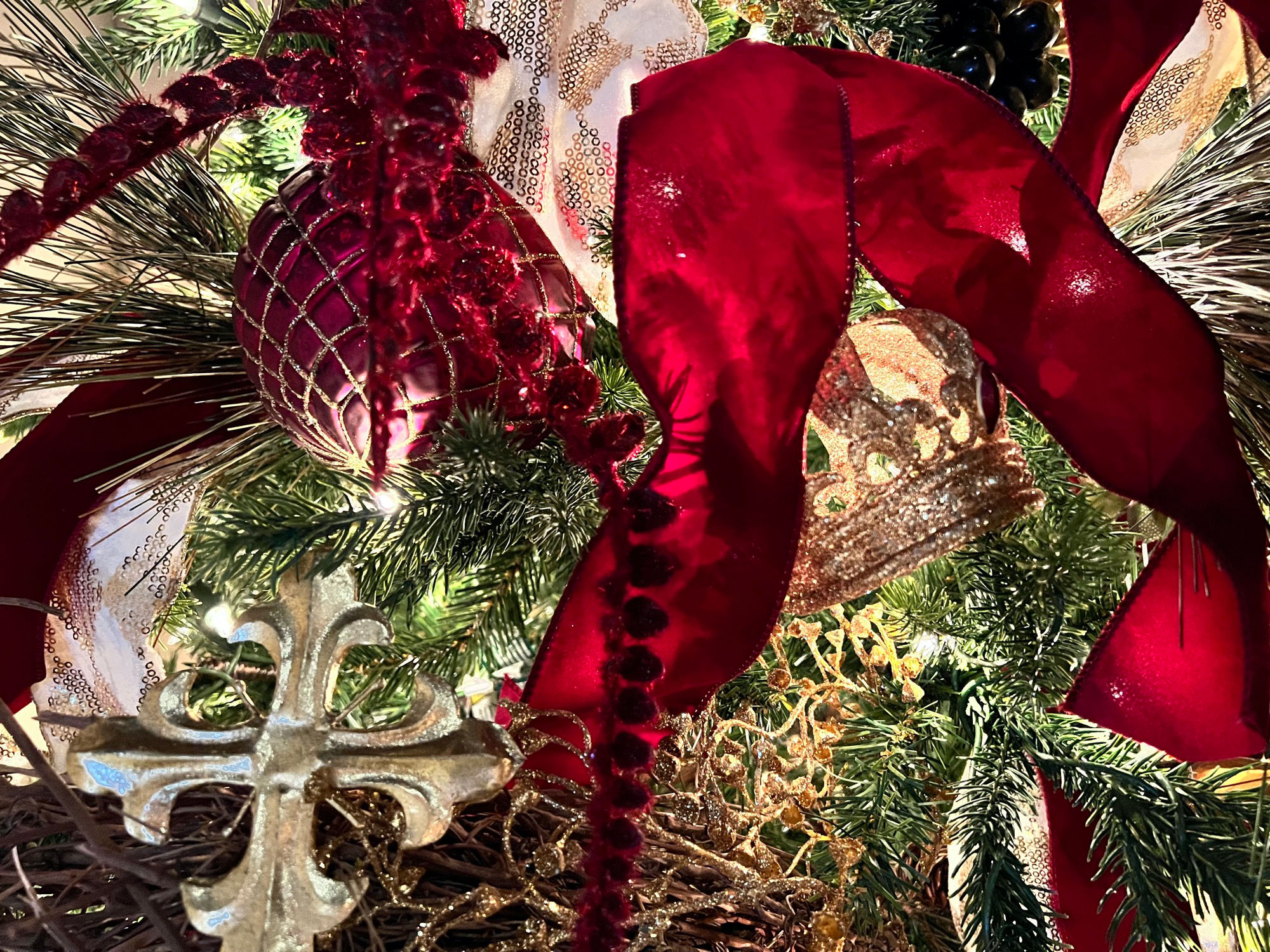
CULTURE TRIPChristmas in Rome
Italy has deep Catholic roots and with the seat of the church based at the Vatican, it's no surprise that Christmas remains a traditional affair for many Romans. From universal traditions like decorating homes and public squares with nativity scenes, to lesser-known customs like La Befana, here's how to celebrate the holidays in the Eternal City.Kick off the Festivities on December 8
Unlike in the UK, where Christmas seems to come earlier every year, Italy's festive calendar is pretty fixed. In Rome, lights and decorations generally start to appear around the beginning of the month but it's the Immaculate Conception on December 8 that really marks the beginning of the season.Go see the Christmas tree at the Vatican
First taking place in 1982, the tradition of placing a giant Christmas tree in St. Peter's Square is a relatively new way to mark the festival season in Rome. This year's fir comes from the archdiocese of Elk, in northeastern Poland, and will be decorated with stars and baubles designed by young cancer patients from several Italian hospitals.Display a Presepe
Presepe directly translates to crib but more accurately describes the nativity scenes on display in many homes and public squares across Italy. Often large, sprawling scenes which depict Jesus' manger in great detail, presepi are traditionally put up on December 8 and taken down on January 6, the Epiphany. To see just how complex these miniatures can be, head to the annual 100 Presepi exhibition at the Church of Santa Maria del Popolo.Feast on Fish
In the Roman Catholic church Christmas Eve is a day of fasting and abstinence. The Feast of Seven Fishes is the traditional evening meal that takes place on La Vigilia (Christmas Eve). There's no meat on the menu but seven seafood courses instead. These days, it's not imperative to prepare the full seven dishes and in Roman kitchens the local specialty of dried salt cod, known as baccalà, is popular.Piazza Navona Christmas Market
At its best, the Christmas Market in Piazza Navona is composed of stalls selling handmade gifts, sweet treats and festive decorations, an old fashioned carousel, a twinkling Christmas tree and a traditional nativity scene. However, in typical Roman fashion, it often courts controversy over which vendors are awarded permits. As a result, the size and content of the market is always temperamental – but it wouldn't be Christmas in Rome without heading to Piazza Navona to find out what's in store this year.Sample Festive Foods
While turkey is becoming a more frequent addition to the Italian Christmas table, roast lamb, chicken or pork are all traditional options. Of course, there's always pasta, which in Rome is often in the form of tortellini in brodo – filled pasta served in broth – a dish that originally comes from the Emilia-Romagna region. Don't forget to save room for a slice of panettone or pandoro.See the Pope
Unsurprisingly the Pope has a packed schedule in December so there are a number of opportunities to celebrate Christmas together. Join him at Piazza di Spagna on December 8 when he places a wreath at the base of the Column of the Immaculate Conception and offers prayers to the crowd. Get tickets in advance for the traditional Christmas Eve mass in St. Peter's Basilica, or just show up on December 25 for the special Urbi et Orbi blessing in the square outside.Wait for La Befana
In Italy, it's not Santa Claus who showers children with gifts but La Befana. The story goes that the Three Wise Men knocked on her door in search of directions. The old woman couldn't help but let them stay the night. After they left, she realized she too wanted to join the search. To this day, La Befana still flies around on her broomstick, looking for Christ. On January 5, the eve of the Epiphany, she leaves sweets in the stockings of well-behaved boys and girls. This marks the end of the season's festivities – l'Epifania, che tutte le feste si porta via!
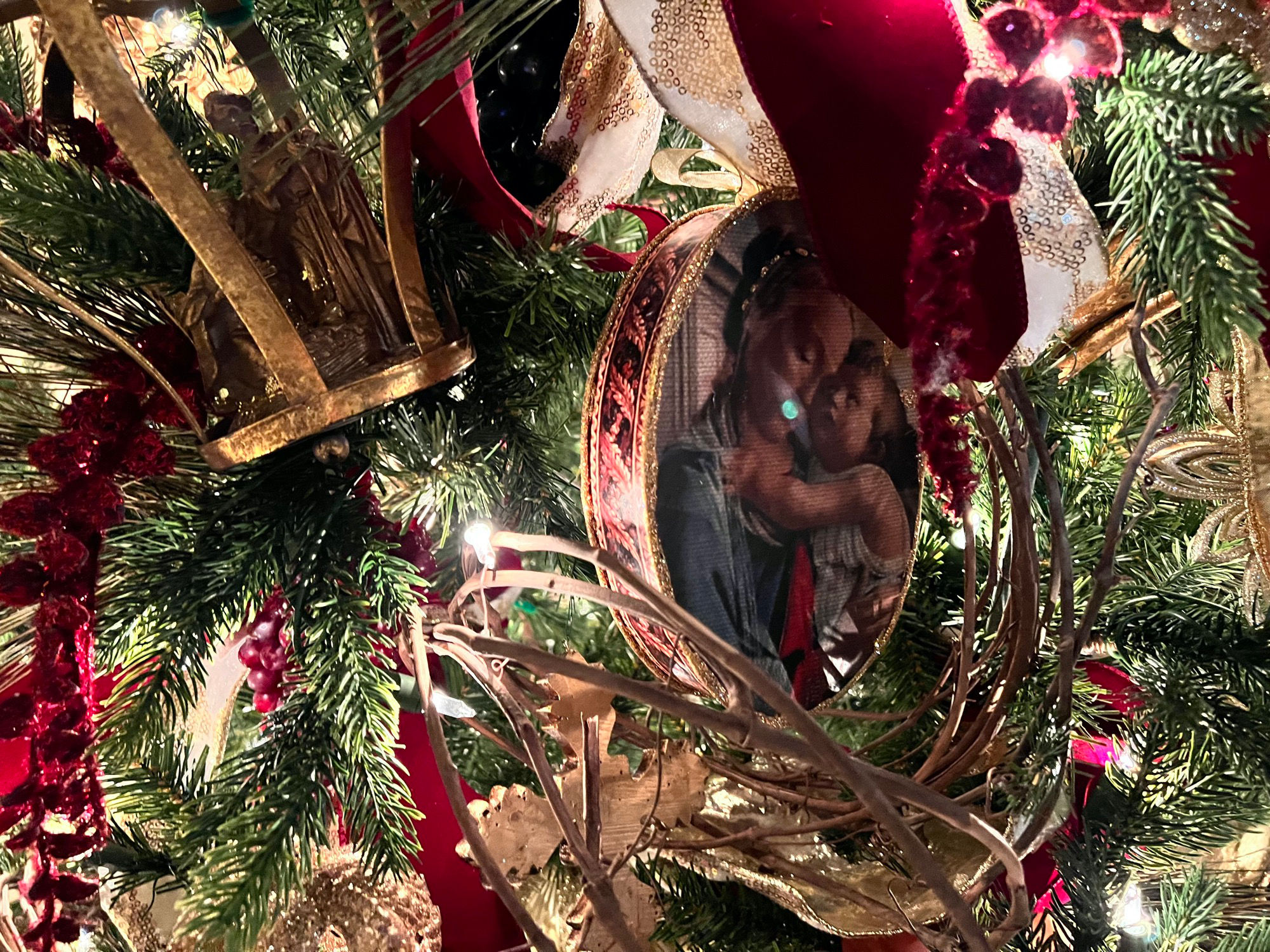
ALL THINGS CHRISTMASChristmas in Italy
Like most predominantly Catholic countries, Italian Christmas Traditions the festivities for Christmas begin early December. The Feast of Immaculate Conception takes place on December the 8th, and is a national holiday it Italy. As is St. Stephens day, on December 26th.Decorations
It is an Italian Christmas Tradition to put out your Nativity Scene and decorate your Christmas Tree on this day. Festivities continue until January with the Feast of the Epiphany. Many Italians will spend Christmas Eve in Church. Catholic influences are still very predominant in Italy's Christmas Traditions, as Nativity Scenes are very important, a tradition believed to be started by Saint Francis of Assisi.Christmas Food
Similar to other religious cultures, do not eat meat at Christmas. Italians celebrate their Christmas dinner as The Feast of Seven Fishes. One of the most popular Italian Christmas Traditions, which carried over into Italian-American festivities and is common in many part of the USA with Italian roots. Many traditional fishes that may be eaten include, cod scallops, shrimp, Calamari/Octopus, Oysters, Eel or Clams. They may be cooked alone, or included in pasta or salads.For dessert, some of the Italian Christmas Traditions to eat include Cannoli, Struffoli and Panettone. Many regions have their own special Traditional Italian dessert.
Gifts
Another part of the Italian Christmas Traditions are that children receive gifts from the good witch (sometimes called The Christmas Witch) La Befana, old, bent and dressed in black. Although this tradition was predominantly limited to Rome and surrounding area, it has become more popular in the last century, and now firmly an Italian Christmas Tradition. La Befana was a widowed, childless woman when the Three Kings passed on their way to see the Christ child. When they asked her the way to Bethlehem she was busy cleaning and sent them away. Realising her mistake, she left to search for the Baby Jesus. To this day she is still searching going from house to house on Epiphany, January 6, leaving a gift for good children.In modern times, Children may also receive gifts from Santa Claus (in Italian 'Babbo Natale'), or Baby Jesus himself (in older Italian Christmas Traditions), under the Christmas Tree on Christmas Eve.

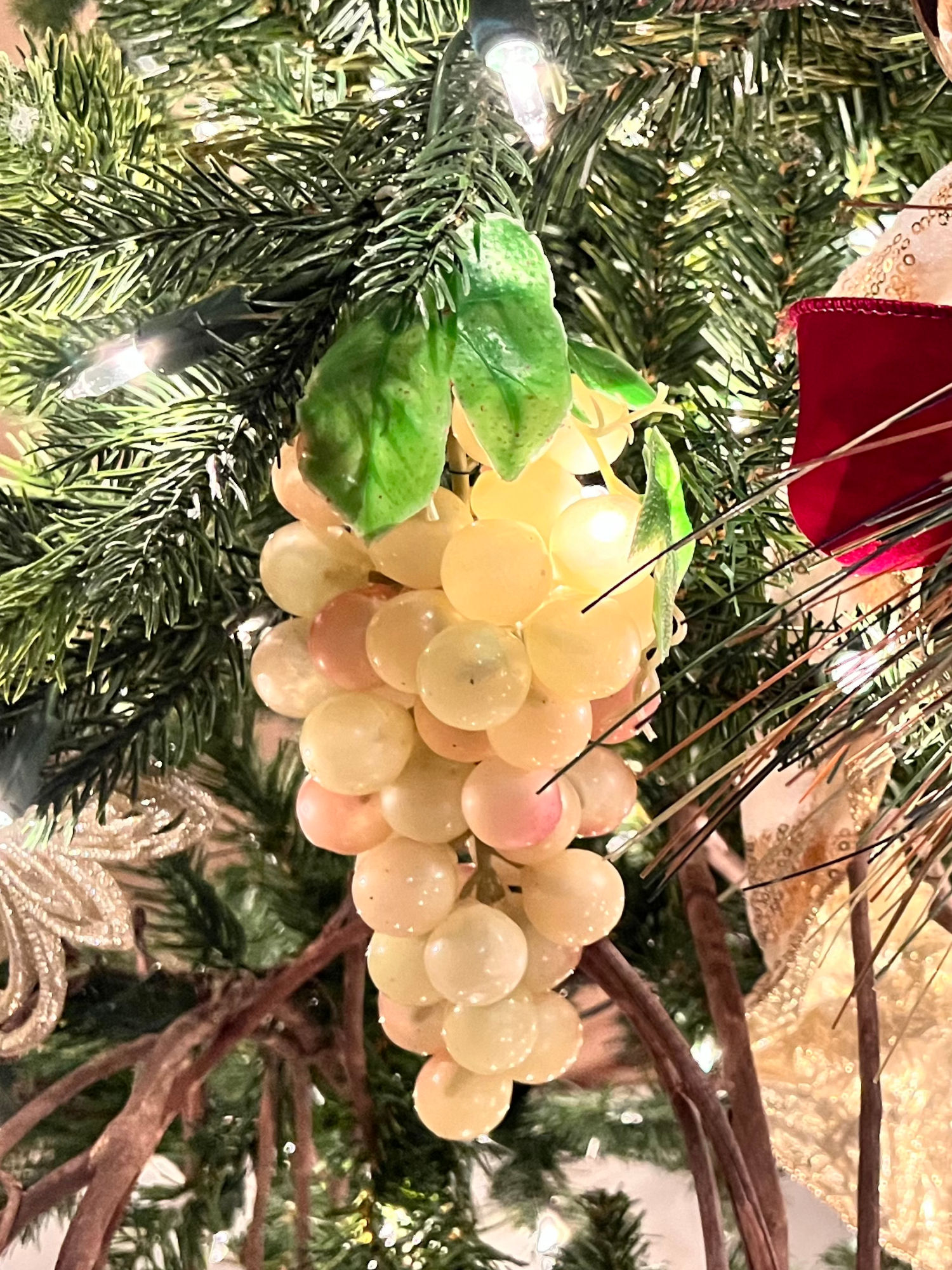
HOW STUFF WORKSChristmas Traditions in Italy
The Christmas season begins in Italy on the first Sunday of Advent, which is four Sundays before Christmas. In the cold winter weather of the northern mountains and in the mild weather of the south, Christmas fairs feature fireworks and bonfires along with holiday music. Families go to the Christmas markets to shop for gifts and new figures for the manger scene. Some families set up a Christmas tree and decorate it.During novena, the nine days before and including Christmas Day, children go from house to house reciting Christmas verses for coins. The family sets up its presepio, or manger scene, on the first day of the novena. They gather before the presepio each morning or evening of novena to light candles and pray.
Some families put life-size figures of Mary and Joseph in their front yard. Both manger scenes and Christmas carols originated in Italy.
During this time, children write letters to their parents wishing them a merry Christmas, promising good behavior, and making a list of the gifts they hope to receive. The parents read these letters aloud at dinner. Then they toss them in the fireplace. The children chant to La Befana, the mythical Christmas witch, as their wishes go up the chimney.
When the first star appears in the evening sky on Christmas Eve, every family sets lighted candles in their windows to light the way for the Christ Child. They light candles around their presepio and pass the figure of the Baby Jesus from person to person, finally placing it tenderly in the manger. Then they enjoy a lavish meatless supper featuring fish or another type of seafood, vegetables, salads, antipasto, bread, pasta, and sweets. Later that night, everyone goes through the torch-lit streets on their way to Christmas Eve mass.
Christmas Day is reserved for church, family, and feasting. Some Italian children receive gifts from Baby Jesus or from Babbo Natale, as Father Christmas is called. Then everyone sits down to a big Christmas dinner. This often includes capon or another roasted meat. Pannettone, a yeast cake filled with fruit, and panforte, a dense honey cake spiced with cloves and cinnamon, are popular sweets, along with cassata, which includes ice cream and fruit.
New Year's Day is when friends get together and visit. It is also the day when Italians exchange gifts with each other. The children have to wait until January 6 to get their gifts from La Befana, whose name comes from the Italian word for Epiphany.
January 6 is also called Three Kings Day, because it is the day the Three Kings visited the Christ Child in Bethlehem long ago. The legend says that old Befana was too busy cleaning house to help the Wise Men. Now the aged wanderer flies through the air on her broomstick looking for the Christ Child on the eve of Epiphany. Children set out their shoes by the fireplace on that night, hoping for the gifts they asked for during novena. La Befana leaves candy and gifts for children that are good.
During the Christmas season, Italian families sing a special song called Shepherds' Carol in honor of the zampognari, or real shepherds who came to town at Advent and went from house-to-house playing bagpipes and singing songs about the birth of Jesus. In some towns, bagpipers dressed as shepherds still play and sing in front of the neighborhoods' presepios.
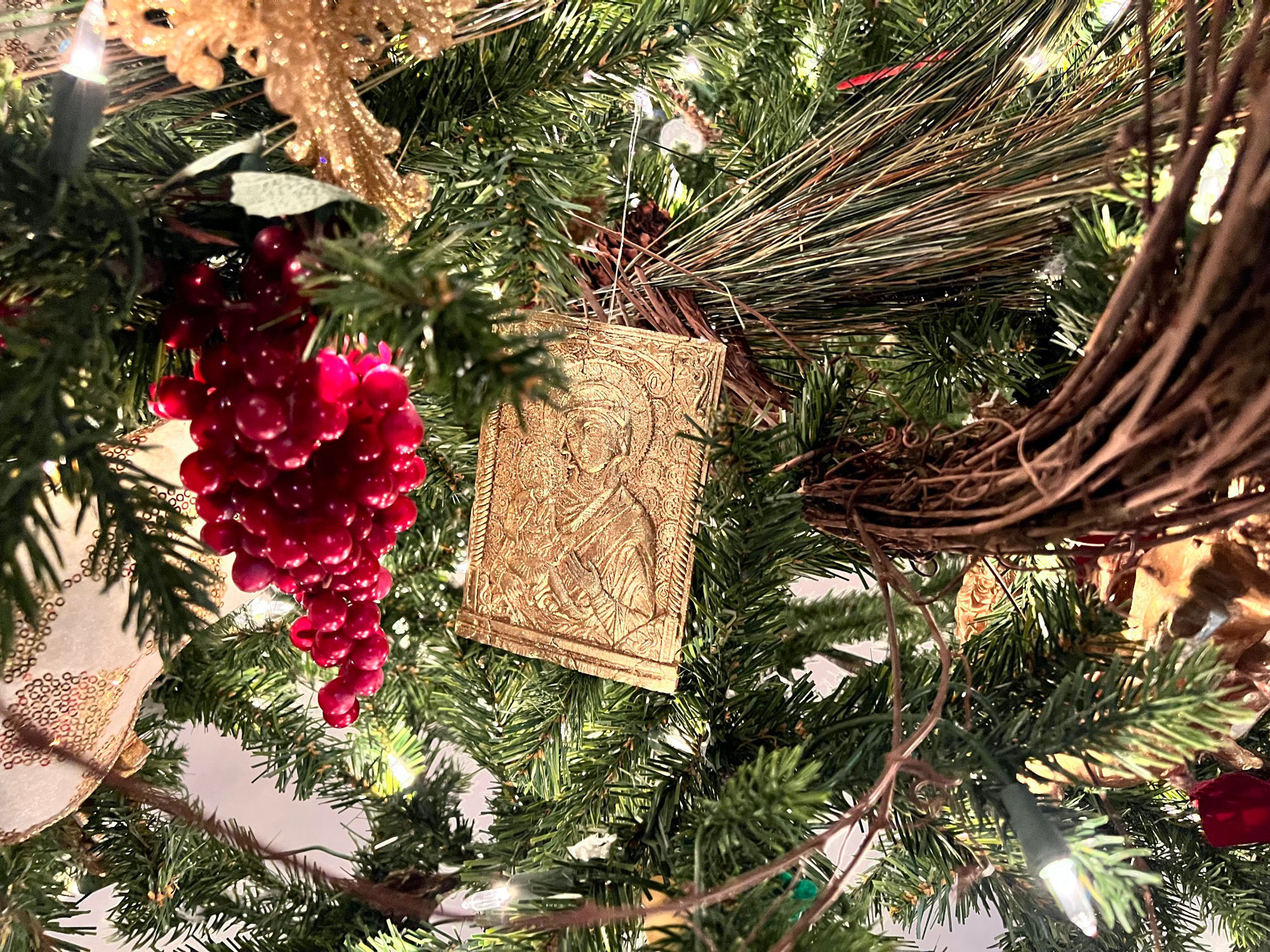
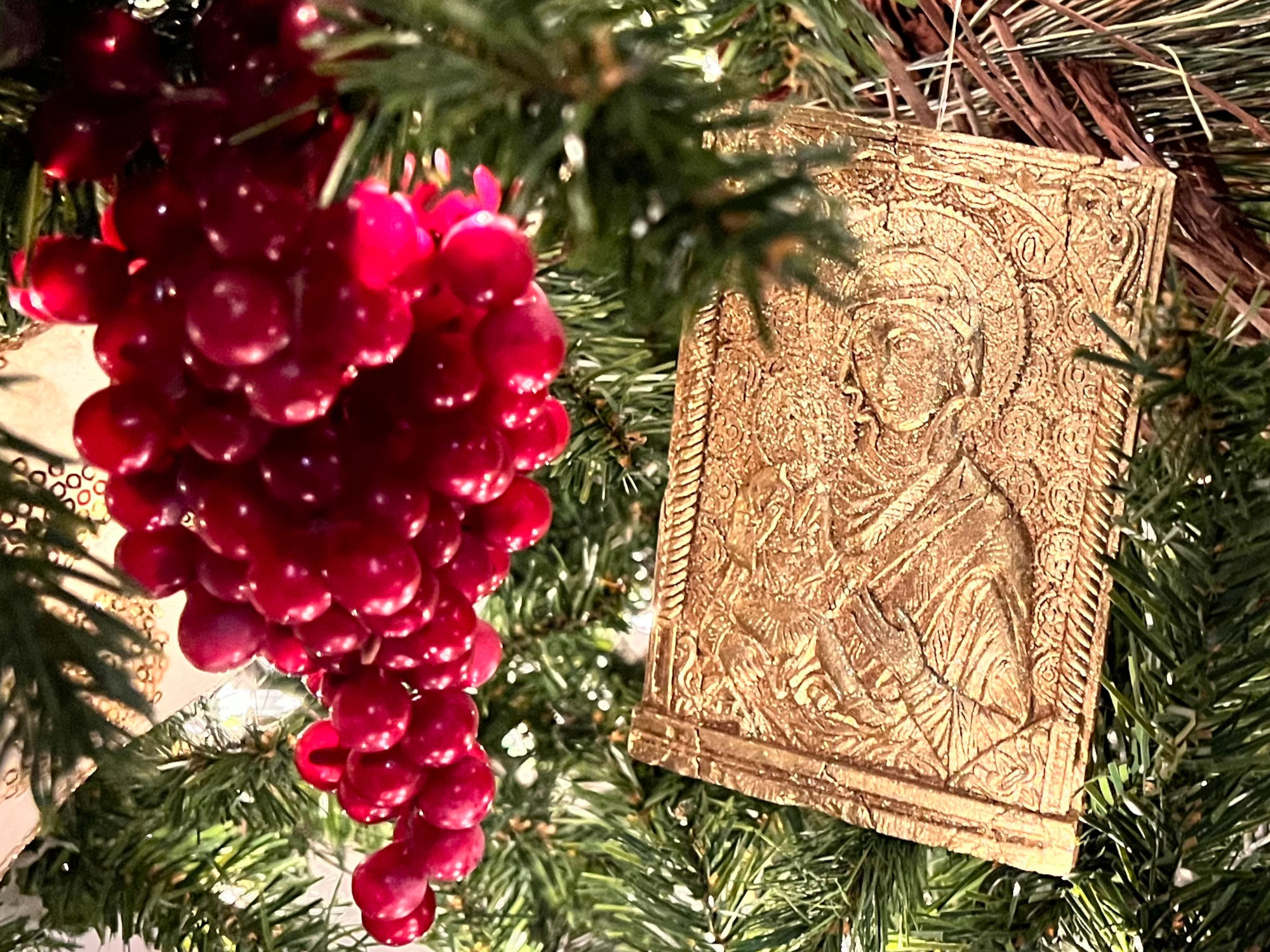
CULTURE TRIPThe Story of Befana
Italy is a historically Catholic culture with many holidays, traditions and beliefs coming from biblical and religious roots. They celebrate many more national holidays from the Christian religion than some other countries and therefore have more traditions for the holidays. In the Western world we have Santa Claus and Italians also believe in Old Saint Nick during Christmas. However, there's another holiday they celebrate that has a similar concept of Santa with some similarities to Krampus from other European countries. Befana is a folklore tradition attached to a January holiday, but has some unusual characteristics that go along with it.Befana is said to be an old woman and many refer to her as a witch, who visits all the children in Italy on the eve of the Epiphany, celebrated on January 6. She fills the children's stockings full of either candy or coal, depending on their behavior the year before. Sound familiar so far? In some poor parts of Italy, the children receive a stick in their stocking instead of coal if they've been naughty. Befana is portrayed as a hooded old hag, similar to the type of witches we see during Halloween, covered in soot (she enters homes through the chimney) and rides a broom. She carries a bag full of candy and is said to be the best house keeper in all the land due to her habit of sweeping the houses of the children she visits before she leaves.
The children are told that she will give them a swift thump from her broomstick if they try to see her when she arrives, but the tradition could just be to keep kids in their beds. To be gracious and thankful hosts, families leave her a glass of wine and a bit of their traditional local food to refuel her for the rest of her journey. So, Santa gets fat and jolly from all the sweets families leave for him and Befana drunkenly rides her broom from house to house leaving candy.
If the legend didn't date back so far, it would seem like the Italians just mixed western Halloween and Christmas traditions to create their own January celebration. While encompassing early Christian and Roman traditions and celebrations, many of which we still celebrate today such as Christmas gift giving and New Year's celebrations, some anthropologists have also tied some aspects of tradition of Befana to some pre-Christian elements of the Neolithic period and some Celtic aspects as well. There are a few different legends of how Befana started.
One story says the Three Wise Men from the Bible stopped to ask her for directions a few days before the birth of baby Jesus. She did not know and although she couldn't help them, she did offer them food and shelter for the night. She had such a pleasant and tidy home and the Three Wise Men were so pleased, they invited her to accompany them on their journey to find baby Jesus. She declined as she had much housework to do, but later had a change of heart. It was too late, so she left on her own search looking for them and baby Jesus, leaving candy or fruit for the good children and coal, onions or garlic for naughty children. A variation of this story also says that she saw a light in the sky and went to follow it thinking it would lead her to the infant. She continues to look and even though she hasn't found him, she still leaves gifts for all the children, because the goodness and innocence of Jesus can be found in every child.
Another Christian story that takes a darker turn says Befana was an ordinary mother who was suffering from the loss of her child. She went crazy with grief and when she heard about the birth of Jesus, she went to find him in the delusion that he was her son. She eventually met Jesus and presented gifts to make him happy. He was overcome with joy and gave her a gift in return, to be the mother of every child in Italy.
The modern day Befana is now celebrated throughout Italy. Some regions where the religious holiday of the Epiphany is held in a higher regard, such as Umbria, Le Marche, and Latium, have big festivals and markets, and many people like to dress in costume as Befana. Every child is naughty at least some of the time, so it has become normal that each child gets a little lump of "coal", rock candy made with black caramel coloring in their stocking among the other candy. Some places celebrate Befana more than others such as Piazza Novana in Rome, where you can find some candies and mini coal candy on sale during the Christmas and Epiphany market where lore says she shows herself in a window at midnight, bringing a crowd to "see" Befana every year at midnight in early January. It is an annual tradition for many families to wait in the piazza at midnight and pretend to spy Befana up in a high window, fooling the kids.
Traditions are part of what make each culture unique, and this Christmas and Halloween hybrid is definitely unique to Italy. House cleaning witches on brooms, candy or coal in stockings, and all in the name of the biblical holiday of the Epiphany. Befana is an interesting folk tradition in Italy that keeps the children behaving and something to look forward to after the Christmas and New Year holidays.


WORLD HOLIDAY TRADITIONSBuon Natale
Christmas, as it is celebrated in Italy, has two origins: the familiar traditions of Christianity blended with the pagan traditions predating the Christmas era. The greatest feast of the ancient Roman Empire, "Saturnalia" (a winter solstice celebration), just happens to coincide with the Christmas celebrations of the Advent. Consequently, Christmas fairs, merry-making and torch processions, honor not only the birth of Christ, but also the birth of the "Unconquered Sun." "Natale," the Italian word for Christmas, is literally the translation for "birthday."A delightful, but rapidly disappearing tradition in Italy, is the ushering in of the coming festivities by the "Piferari" or fifers. They descend from the mountains of the Abruzzo and Latium playing inviting and characteristic tunes on their bagpipes, filling the air with anticipation for the joyous celebration to come.
Christmas Eve is a time for viewing Italy's artistic and elaborate manger scenes or Cribs. They consist of figurines, in clay or plaster , of the infant Jesus, Mary and Joseph. An ox and ass are nearby because legend has it that they warmed the child with their breath. It is around this basic focal point that individual artisans create their own intricate landscapes. There may be grottoes, small trees, lakes, rivers, the lights of "Bethlehem" in the background, angels hung from wires, and occasionally, even local heroes. The most beautiful Cribs are set up in churches. There is often a contest between churches of the same town for the best Crib. People go from church to church to view and compare the Cribs and displays.
Another tradition is the burning of the Yule log, which must stay alight until New Year's Day. This, again, is an example of pagan and Christian blending. The pagan belief explains the purifying and revitalizing power of fire, and that with the burning log, the old year and its evils are destroyed. Christian legend tells how the Virgin Mary enters the homes of the humble at midnight while the people are away at Midnight Mass and warms her newborn child before the blazing log.
Amidst the general merrymaking and religious observance of Christmas Eve, Christmas tapers (long slender candles) are lighted and a Christmas banquet is spread. In some places, Christmas Eve dinner consists largely of fish. There may be as many as 10 t 20 fish dishes prepared. In Rome, the traditional dish of Christmas Eve is "Capitone," a big female eel, roasted, baked or fried. North of Rome a traditional dish may be pork, sausage packed in a pig's leg, smothered in lentils, or turkey stuffed with chestnuts.
Common throughout Italy are the Christmas sweets: "panettone" (cake filled with candied fruit), "torrone" (nougat) and "panforte" (gingerbread) made with hazelnuts, honey and almonds. All Christmas sweets, as a rule, contain nuts and almonds. Peasant folklore theorizes that to eat nuts favors the fertility of the earth and aids in the increase of flocks and family. In ancient Rome, honey was offered at this time of year so that the new year might be sweet.
Of Special Note...
On Christmas Eve, Italian children set out their shoes for the female Santa Claus, La Befana, to fill with gifts of all kinds like toys, candies and fruit. If the children were good, their shoes would be filled on Christmas morning. If they were bad, they would find their shoes filled with coal. La Befan is the best-known legend in Italy.

Trip SavvyWhere to See the Presepi
Traditionally, the main focus of Christmas decorations in Italy is the Nativity scene, presepe or presepio in Italian. Every church has a presepe and they can be found in squares, shops, and other public areas. Displays often go beyond the manger scene and may even include a representation of the entire village.Presepi are usually set up starting December 8, the Feast Day of the Immaculate Conception, through January 6, Epiphany, but some are unveiled on Christmas Eve. Most Italians set up a Christmas crib in their house and figurines for nativity scenes are made in many parts of Italy, with some of the best coming from Naples and Sicily. Although the presepe is usually set up before Christmas, baby Jesus is added on Christmas Eve.
Origins of Italian Nativity Scenes
The Nativity scene is said to have originated with Saint Francis of Assisi in 1223 when he constructed a nativity scene in a cave in the town of Greccio and held Christmas Eve mass and a nativity pageant there. Greccio reenacts this event each year.Carving figurines for nativity scenes started in the late 13th century when Arnolfo di Cambio was commissioned to carve marble nativity figures for the first Rome Jubilee held in 1300. Said to be the oldest permanent Christmas crib, it can be seen in the museum of Santa Maria Maggiore Church and is one of the top things to see in Rome during Christmas season.
Best Places to See Christmas Cribs, or Presepi, in Italy
- Naples is the best city to visit for their presepi.
Hundreds of nativity scenes are erected throughout the city. Some creches are very elaborate and may be handmade or use antique figures. Starting December 8, the Church of Gesu' Nuovo, in Piazza del Gesu', displays nativity scene artwork from the Neapolitan Nativity Scenes Association. The street Via San Gregorio Armeno in central Naples is filled with displays and stalls selling Nativity scenes all year.- In Vatican City, a huge presepe is constructed in Saint Peter's Square for Christmas that is usually unveiled on Christmas Eve. A Christmas Eve mass is held in Saint Peter's square, usually at 10 pm.
- In Rome, some of the biggest and most elaborate presepi are found in Piazza del Popolo, Piazza Euclide, Santa Maria in Trastevere, and Santa Maria d'Aracoeli, on the Capitoline Hill. A life-size nativity scene is set up in Piazza Navona where a Christmas market is also held. The Church of Saints Cosma e Damiano, by the main entrance to the Roman Forum, has a large nativity scene from Naples on display all year.
- Bethlehem in the Grotto - an elaborate life-size nativity scene is created each year and transported to the Grotte di Stiffe, a beautiful cave in the Abruzzo region, about 20 miles from L'Aquila. The scene is illuminated and can be visited during December.
- Verona has an international display of nativities in the huge Roman Arena through January.
- Trento in northern Italy's Alto-Adige region has a large nativity scene in Piazza Duomo.
- Jesolo, 30 km from Venice, has a sand sculpture nativity made by top international sand sculpture artists. It takes place daily in Piazza Marconi through mid-January. Donations are used to fund charitable projects.
- Manarola in Cinque Terre has a unique ecological nativity powered by solar energy.
- Celleno, a tiny town in the northern Lazio region about 30 km from Viterbo, has a magnificent presepe that is set up for viewing all year. Celleno is also famous for its cherries.
- Many churches in Milan have elaborate nativity scenes set up around Christmas time.
Top Places to See Living Nativity Scenes, Presepi Viventi, in Italy
Living nativity pageants, presepi viventi, are found in many parts of Italy with costumed people acting out the parts of the nativity. Often living nativity scenes are presented for several days, usually Christmas Day and December 26, and sometimes again the following weekend around the time of Epiphany, January 6, the 12th day of Christmas when the three Wise Men gave Baby Jesus their gifts.
- Greccio, Umbria, was the site of Saint Francis' first live nativity (a simple silent tableau of the Holy Family with an ox and donkey). Greccio still holds one of Umbria's top Christmas events, an elaborate, live nativity with hundreds of participants.
- Frasassi Gorge has one of the largest and most suggestive nativity pageants in Italy. Held on a cliff near the Frasassi Caves, the Genga Nativity Scene includes a procession up the hill to a temple and scenes from everyday life during the time of Jesus' birth. More than 300 actors take part and proceeds are given to charity. Usually held on December 26 and 30.
- The beautiful medieval hill town of Barga, in northern Tuscany, has a living nativity and Christmas pageant on December 23.
- Custonaci, a small town near Trapani in Sicily, has a beautiful nativity scene re-enacted inside a cave. A tiny town was buried in the cave by a landslide in the 1800's. The cave has been excavated and now serves as a setting for the interesting live nativity events December 25-26 and early January. More than just a nativity, the village is set up to resemble an ancient village with craftspeople and small shops.
- The evocative town of Equi Terme, in the Lunigiana region of northern Tuscany, has a reenactment of the nativity that takes place throughout the village in a beautiful hillside setting.
- Milan has an Epiphany Parade of the Three Kings from the Duomo to the church of Sant'Eustorgio, January 6.
- Rivisondoli, in the Abruzzo region, has a reenactment of the arrival of the 3 kings on January 5 with hundreds of costumed participants. Rivisondoli also presents a living nativity December 24 and 25. Also in the Abruzzo region, L'Aquila and Scanno have living nativities on Christmas Day as do many other small villages in the region.
- Living nativity scenes in the Liguria region include the towns of Calizzano, Roccavignale, and Diano Arentino during December.
- Vetralla, in the Northern Lazio region, has the oldest living nativity in the region.
- Chia, near Soriano, also in Northern Lazio, holds a large living nativity on December 26 with more than 500 participants.
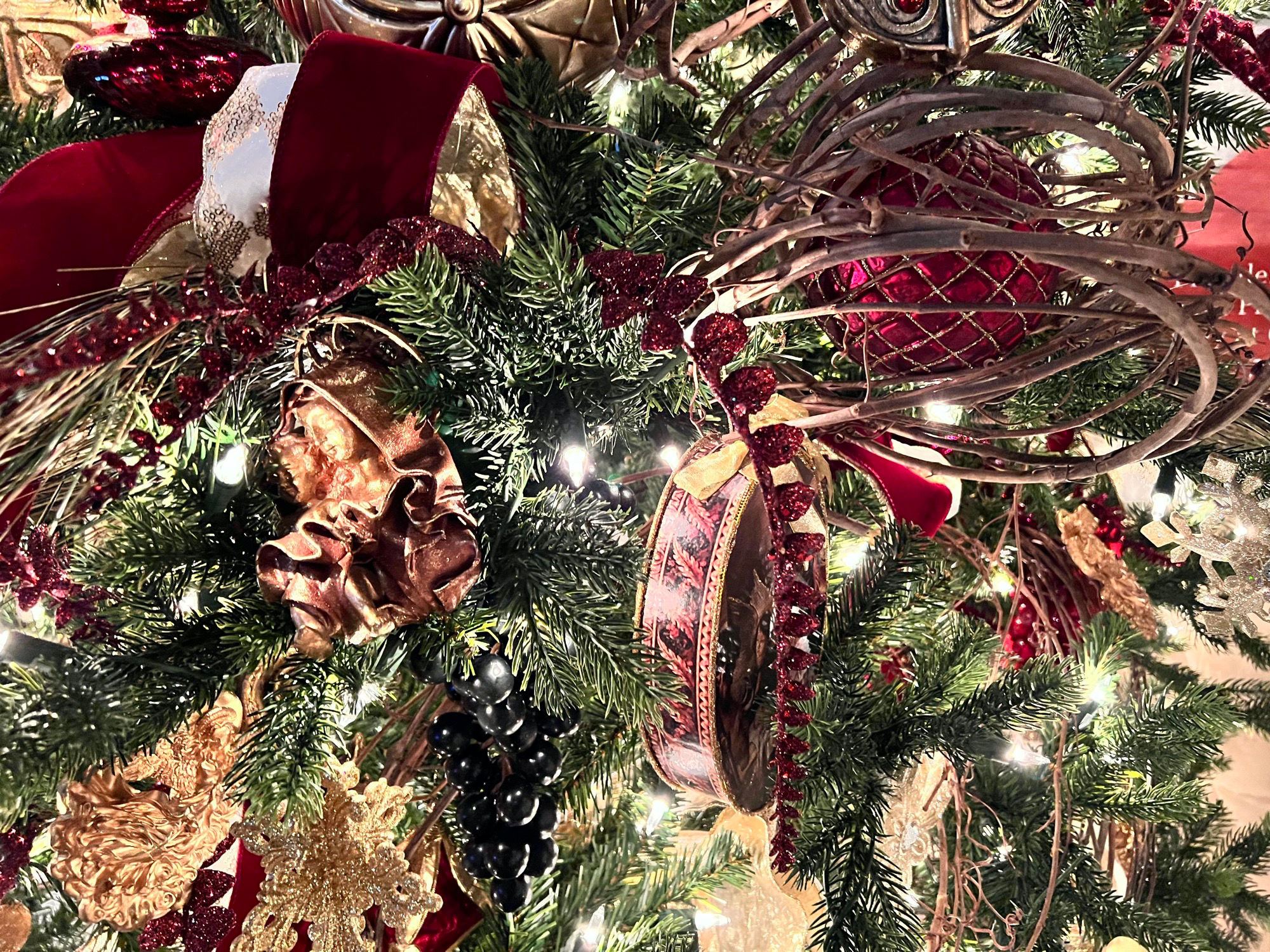

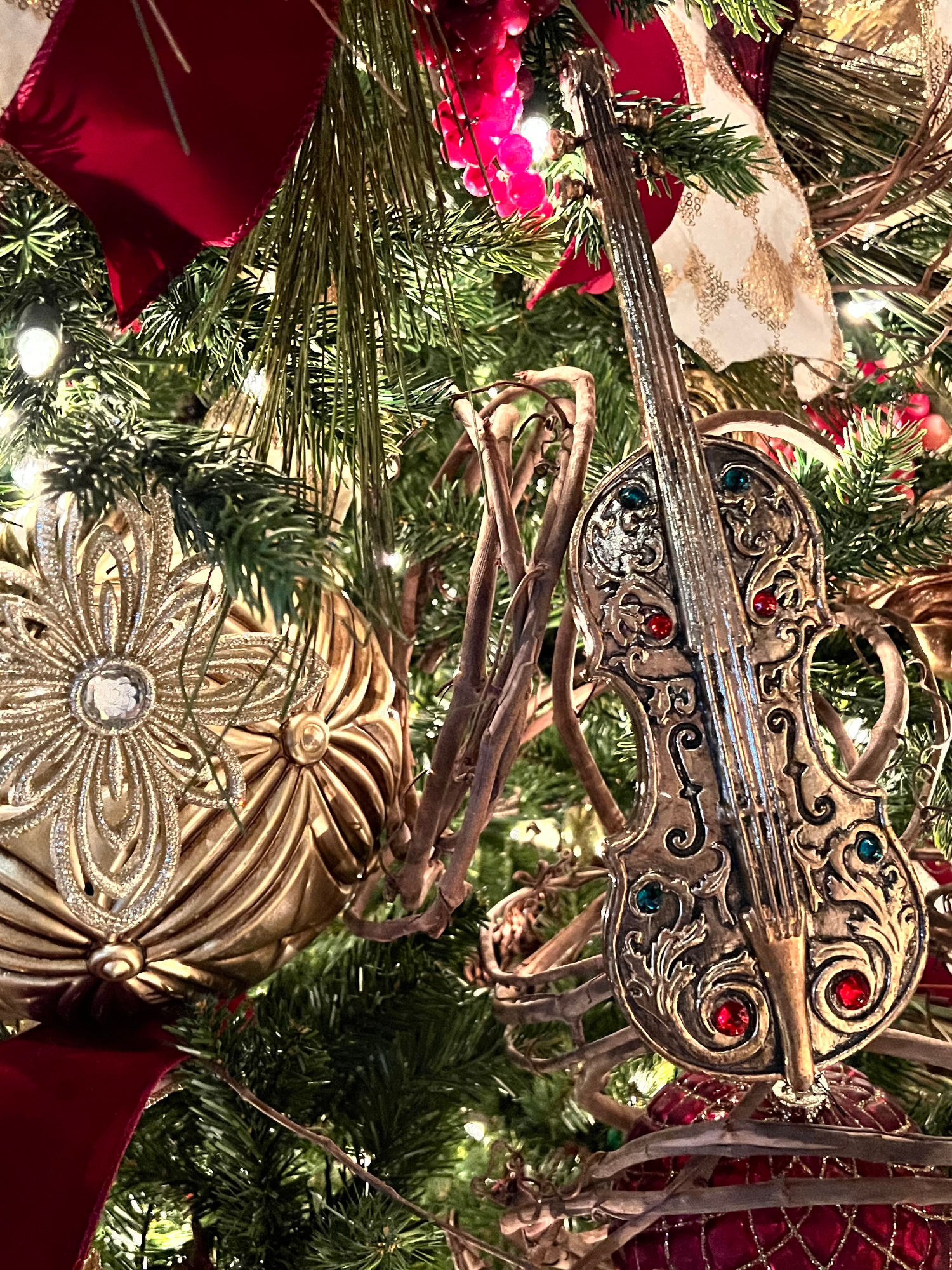
WIKIPEDIANatale
Christmas in Italy (Italian: Natale) begins on December 8, with the feast of the Immaculate Conception, the day on which traditionally the Christmas tree is mounted and ends on January 6, of the following year with the Epiphany (Italian: Epifania).The term Natale derives from the Latin natalis, which literally means 'birth', and the greetings in Italian are buon Natale (Merry Christmas) and felice Natale (Happy Christmas).
Nativity Scene
The tradition of the nativity scene comes from Italy. What is considered the first nativity scene in history (a living nativity scene) was set up by St. Francis Of Assisi in Greccio in 1223. However, nativity scenes were already found in Naples in 1025. In Italy, regional crib traditions then spread, such as that of the Bolognese crib, the Genoese crib and the Neapolitan crib.Yule Log
The tradition of the Yule log, once widespread, has been attested in Italy since the 11th century. A detailed description of this tradition is given in a book printed in Milan in the fourteenth century. The Yule log appears with different names depending on the region: in Tuscany it is known as ciocco, while in Lombardy it is known as zocco. In Val di Chiana, in Tuscany, it was customary for children, blindfolded, to hit the block with pincers, while the rest of the family sang the Ave Maria del Ceppo. That tradition was once deeply rooted in Italy is demonstrated by the fact that Christmas in Tuscany was called the "feast of the log".Christmas Tree
The tradition of the Christmas tree, of Germanic origin, was also widely adopted in Italy during the twentieth century. It seems that the first Christmas tree in Italy was erected at the Quirinal Palace at the behest of Queen Margherita, towards the end of the nineteenth century.During Fascism this custom was frowned upon and opposed (being considered an imitation of a foreign tradition), preferring the typically Italian nativity scene. In 1991, the Gubbio Christmas Tree, 650 meters high and decorated with over 700 lights, entered the Guinness Book of Records as the tallest Christmas tree in the world.
Bagpipers
Typically Italian tradition is instead that of the bagpipers, or men dressed as shepherds and equipped with bagpipes, who come down from the mountains, playing Christmas music. This tradition, dating back to the nineteenth century, is particularly widespread in the South of the country.Bearers of Gifts
Typical bearers of gifts from the Christmas period in Italy are Santa Lucia (December 13), Baby Jesus, Babbo Natale (the name given to Santa Claus), and, on Epiphany, the Befana.
- Santa Lucia
Traditional bearer of gifts in some areas of Northern Italy, such as Verona, Lodi, Cremona, Pavia, Brescia, Bergamo and Piacenza is Santa Lucia on the night between December 12 and 13.According to the Italian tradition, Saint Lucia shows up on her donkey and the children must leave a cup of tea for the saint and a plate of flour for the animal.
- Befana
A typical figure of Italian Christmas folklore is the Befana, depicted as an old witch on a broom, who appears as a bearer of gifts on January 6, the day of the Epiphany: according to tradition, this figure brings gifts (usually sweets inside of a sock) to good children and coal to bad children.The Befana, whose name is an altered form of the word Epifania, is a figure that can be connected to others that are also found in other cultures, such as the German Frau Berchta and the Russian Babuška.

CHEF'S PENCILHow to make Italian Christmas cookies?
Master the recipe for pasta frolla!If you're wondering what you need for your own batch of Italian Christmas cookies, well, the answer is pasta frolla. It is what makes Italian homes smell like Buon Natale, and no home goes without it at this time of year.
Pasta frolla is a short-crust pastry dough made from flour, sugar, butter, eggs, baking powder, salt, and extra flavorings. It's crumbly, yet soft, compact yet light, forming the base of the majority of Italian biscuits and cookies.
- Befanini
On the 6th of January, after Santa Claus and New Year, and all the gift-giving, it's time for la Befana. La Befana is a female Santa Claus-like character that leaves sweets and presents for the kids if they've been good, ans when it comes to good, Befanini are some of the best Italian Christmas cookies to munch on.- Iced Butter Cookies
The basic Italian butter cookies are, of course, made from pasta frolla. But, there's more to them that that. Crunchy outside, and all so soft and moist on the inside, these festive treats are not overly sweet, icing notwithstanding.- Pasticiotti
Next we head to Lecce province, to sunny Apulia, the perfect town to to dive into Baroque culture, and also to fill yourself with these delicious custard-filled sweets. While they are not the typical Christmas Italian cookies, they would be a great addition to your festive table.- Anise Cookies
Just like the gingerbread men, anisette -aka anise cookies- are a staple in Italian Christmas cuisine. Making one batch of these anise-infused balls of joy will leave the guests asking for more.- Chocolate Mostaccioli
Should definitely be part of your day-to-day treat-yourself plan during the holidays. They are almond-based, lending them a nutty, earthy flavor. Dense and rich, and dunked in chocolate, these choco-coated cookies are a must on your traditional Italian Christmas platter.- Cucidati (Fig Cookies)
You can't sing Merry Christmas without "figgy pudding", and in Italy there's no Christmas without fig cookies! With a soft, fruity, decadent, fruit filling and a buttery flavor, these tasty bites will not go unnoticed. Originally from Sicily, cucidati bring together all the traditional ingredients of the region: figs and grapes from Greece, and almonds and sugar from Arabic cuisine. They have a quite a history; supposedly they were first made in the 9th century.- Lemon Tarallucci
Tarrallucci, along with mostaccioli and amaretti, are a staple in the Italian holiday menu, and could be a contender for best Christmas Cookie! They are also known as lemon drop cookies, knot cookies (for their knot-like shape), or anginetti.- Soft Amaretti Cookies
Classic Italian desserts for Christmas. Is there anything more Christmassy than a mouthful of marzipan? Soft amaretti cookies have a mildly crispy exterior and a soft, chewy, rich middle.- Struffoli
Babo Natale (Santa Claus) likes to stuff his face with struffoli, at least in the Neapolitan region, where these Christmas sweets are appreciated. They are small balls of sweet dough, fried, and dipped in honey, decorated with candied fruit and candy.- Pignoli
An Italian classic, pignoli are a hit for nut lovers all over the world! They are almond-flavored but are covered in pine nuts- Florentine Cookies
Florentine cookies are packed with crunchy almonds, along with some orange zest for that zing, and the richness of butter. If that's not enough, they can be covered in melted chocolate as well.- Ricotta cheese / Pistachio Cookies
They are not your traditional Christmas cookie, but they look just perfect for the occasion: white snowy glaze, with greenish pistachio that will remind you of the Christmas tree. Buttery, creamy, rich, unctuous, all pastel and pretty, elegant and decadent, filled with pistachio, you cannot get enough of their love.Buttery, creamy, rich, unctuous, all pastel and pretty, elegant and decadent, filled with pistachio, you cannot get enough of their love.- Chiacchiere di Carnevale
These fried puff pastries sprinkled with powdered sugar are not a classic for the winter holidays, but they can be some of the best Italian Christmas cookies if you give them a chance.- Cannoli Cookies with Chocolate
Can you imagine the classic cannoli turned into a cookie just for the love of Christmas? Well, here they are!- Ricciarelli (Almond Cookies)
Next, onto some really awesome almond goodies. Ricciarelli are from Siena and they resemble amaretti, in that they have a similar flavor profile and chewy, fluffy, airy consistency with a crunchy texture on the exterior.- Taralli al Vino
While we think wine does its best as it is, in a glass, these cookies changed our minds. These bite-sized cookies can While we there's no doubt that wine does a great job in a glass, Taralli al Vino prove that there are some other great uses.- Pizzelle Cookies
Another easy-to-make cookie, pizelle effortlessly become the favorite Christmas treat of many, because they look just like snowflakes. You can serve them simple, powdered with sugar, or you can roll them into cones and fill them with fruit, marshmallows, cream, custard, ice cream, chocolate drizzle, and who knows what else?! They take toppings with ease because they are basically tiny, thin waffles in disguise.- Zeppole
The donuts you didn't know you needed! These Italian delights are so fluffy and light that you're in danger of packing away loads of them without realizing. Made from choux dough, and somewhere between donuts, dumplings, cream puffs, and eclairs, zeppole give you the feeling you're biting on a cloud.- Pizzicati
These crunchy yet soft and buttery cookies, with their pinched pastry wrappings, could even become your favorite since they are so easy to prepare.- Canestrelli
Light, simple, cute, and delish! Canestrelli are some of the best Italy has to offer. Originally from Liguria, they used to be made to give as gifts on special, festive occasions. Flavor-wise, they are buttery and lemony.- Tiramisu Cookies
What is a traditional Italian Christmas dinner? Antipasti with meats and cheeses, pasta al forno, plenty of toasted, baked meats, and the classic panettone. While we did not include panettone in the cookie tour for 2021, we did add another symbol of Italian cake: tiramisu. These tiramisu sandwich cookies will make everyone happy!- Chocolate and Almonds Biscotti
Among my favorite Italian Christmas cookies are these delicious chocolate and almond biscotti, adorned with white chocolate. They look very much like cantucci, in fact you could say they are the chocolate version of those delicious classic Italian cookies.

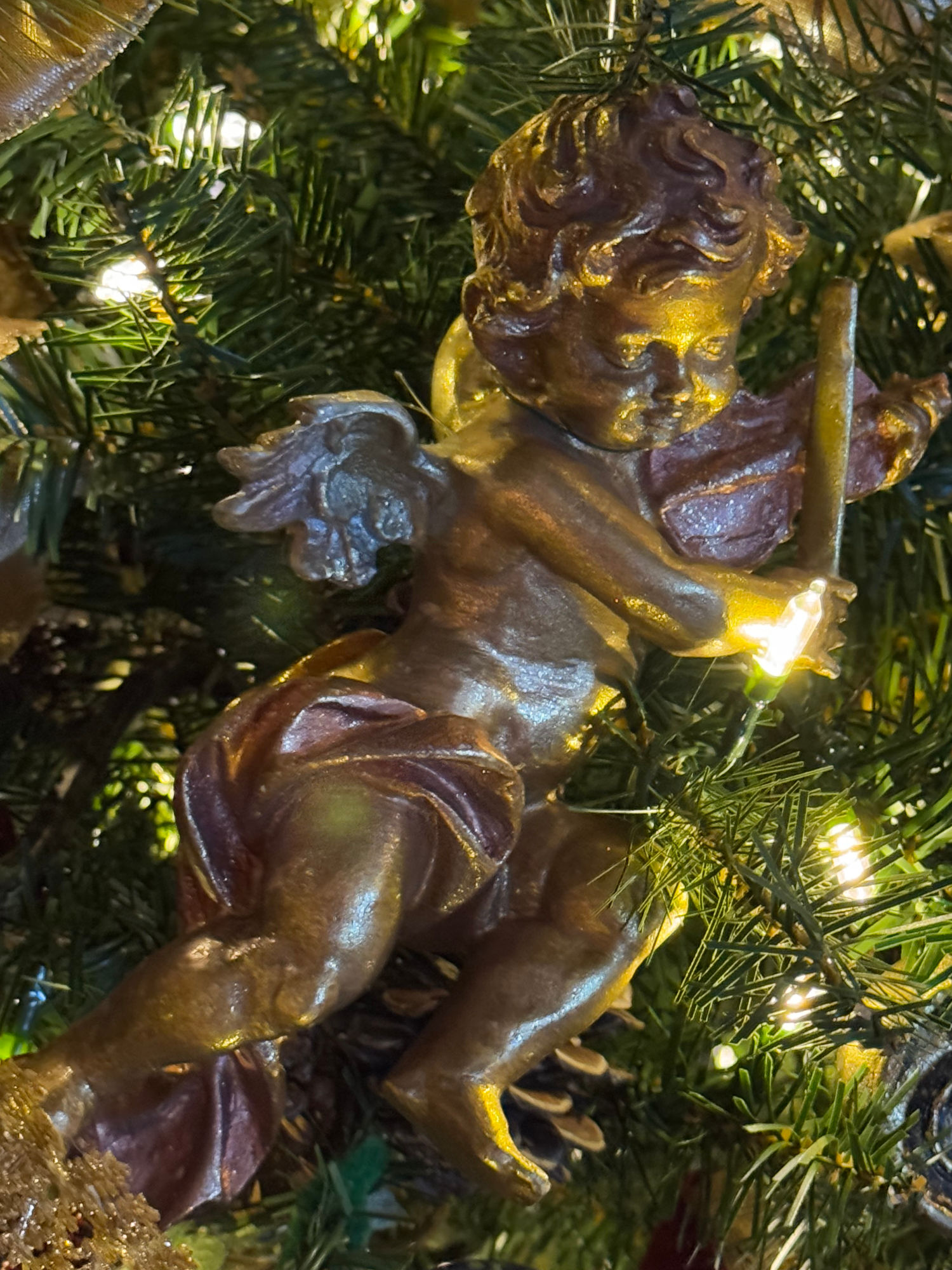
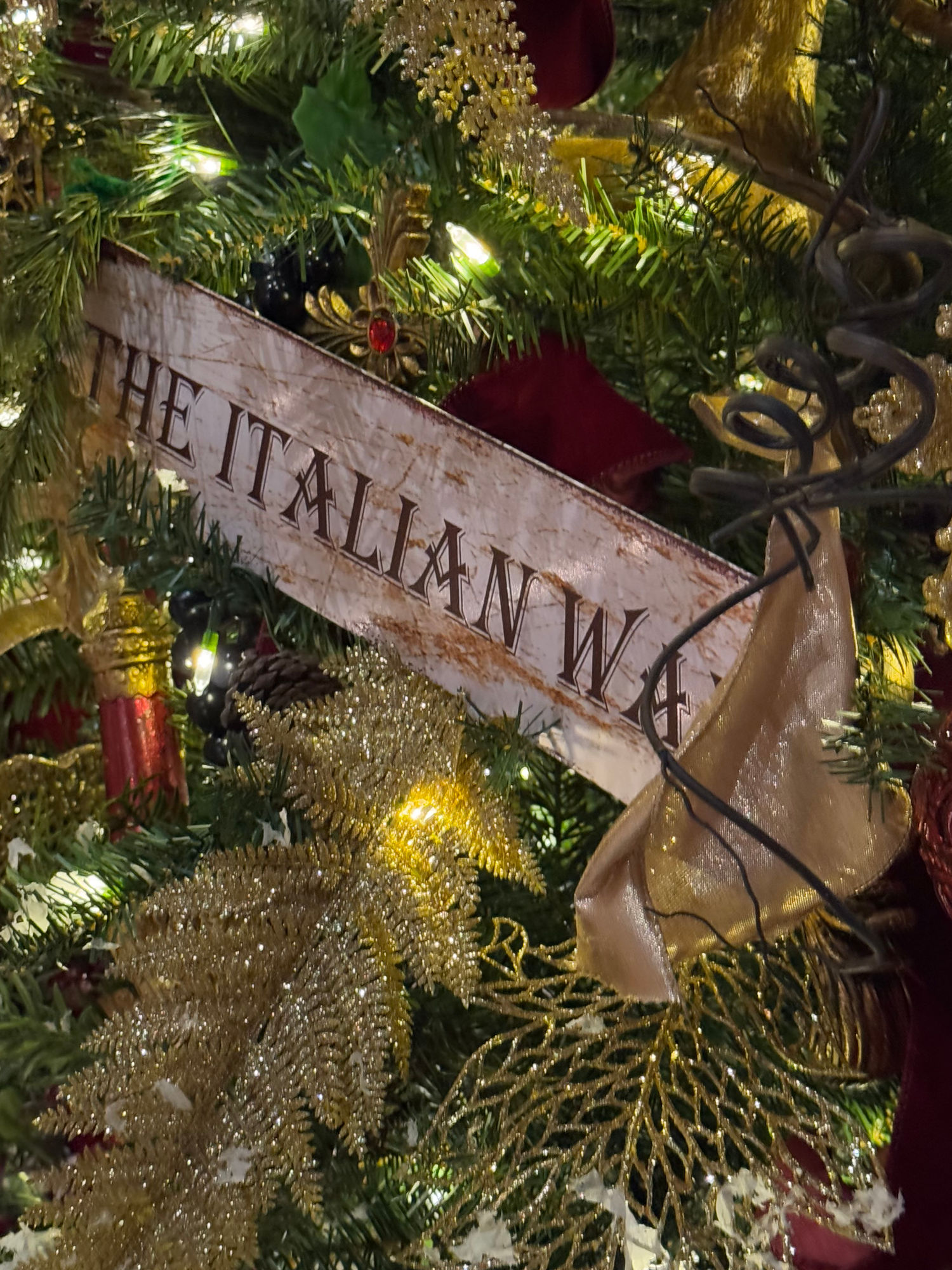

President Reagan Reviewing troops with President Alessandro Pertini of Italy at Quirinale Palace in Rome.
Reagan's Daily DiaryMonday, June 7, 1982
We flew out Wed. morning-I was loaded with briefing books until my head was stuffed with more than I needed to know. Flying into night we arrived in Paris at near midnight their time but only 6 P.M. ours. Met by Van & Bootsie Galbraith our Ambassador plus a welcoming French group. Put up at the Ambassadors residence which is a magnificent palace built in 1840. Suddenly the W.H. looked like an ordinary residence. I had meetings the next day with P.M. Susuzki & Thatcher-plus briefings and that night-Thurs a black tie dinner for Pres. Mitterrand. Fri. visited Mayor Chirac. Every place we drove the streets were lined with friendly crowds. Left Nancy in Paris and flew to Versailles for 1st dinner with the Summit group. Sat. the plenary sessions began. There were differences over East-West trade, Global negotiations and credits to Soviet U. plus how to stabilize currency exchange rates. We more than held our own and I believe came out on top. Sundays meetings were topped with a dinner in the Hall of Mirrors-the table had to be at least 100 feet long-an unbelievably beautiful sight. Nancy had joined me. Then we were entertained by the Paris Opera & later a recital in the Palace Chapel.Up early Mon. morning and off to Rome for meeting with Pope. A group of young American priests broke into song-"America the Beautiful." Both of us were crying. Lunched with Pres. Pertini-then called on P.M. Spadolini. Met the young men (police) who had saved Gen. Dozier. Again, the streets were lined with cheering people. We were told that had never been done for any other head of state. Flew out for London & helicoptered to Windsor Castle. This was a fairy tale experience. Black tie dinner with the Queen & Prince Phillip plus family-the Queen Mother et al. The next day a ride with the Queen. Nancy & the Prince did a carriage of 4 (horses.) We then left for London-I addressed Joint session of Parliament. First Pres. ever to do so. Lunch with P.M. Thatcher then back to Windsor for a White tie dinner-almost as spectacular as Versailles-1 long table for about 150 guests. Bonn and Berlin were again a series of palaces. The N.A.T.O. meeting was a success in every way. We were housed in an old castle complete with moat. Thurs. night a dinner hosted by Pres. & Mrs. Carstens of Germany-they are very nice. Fri. to Berlin-Checkpoint Charley and a heartwarming welcome by hundreds of our mil. personnel & their familys. Final event a speech in Charlottenberg Castle gardens to 25,000 Germans waving American flags. Almost forgot-1st day in Bonn addressed the Bundastag (Parliament). It was hailed as a great success. While in Bonn learned the House had passed a budget-we’re on our way. Also learned though that Israel had invaded Lebanon. I’m afraid we are faced with a real crisis.
Key Facts
- President Reagan meets with Pope John Paul II at the Vatican.
- President Reagan travels to Windsor Castle and meets with Queen Elizabeth, Prince Phillip and the Queen Mother.
- In Chad, the rebel forces of former Prime Minister Hissene Habre capture the capital of Ndjamena and overthrow the government of President Goukouni Oueddei.
RONALD REAGANToast at a Luncheon Meeting With Italian President Alessandro Pertini in RomeJune 7, 1982
It's a genuine privilege to be here today and, most especially, as the guest of President Pertini. The poet Robert Browning wrote, "Open my heart and you will see 'graved inside of it Italy."
As countless immigrants to my nation's shores would confirm, Italy is engraved inside millions of American hearts. And, Mr. President, after your recent trip to the United States, the name Pertini also is engraved in our hearts.
In my time at the White House, I don't remember as beautiful and moving a gesture as the kiss you planted on our flag that March morning. That kiss touched all the citizens of my country. We were deeply honored.
And, Mr. President, I want to say personally how honored I feel to call you amico. The word "friend" certainly characterizes the relationship between Italy and the United States. We're drawn together by the blood of our people and the bonds of our Western ideals. We share a devotion to liberty and the determination to preserve that liberty for ourselves and our descendants.
Yes, we live in difficult times that test our beliefs. The independence and freedom of people the world over are threatened by the expansion of totalitarian regimes and by the brutal crimes of international terrorism. But let me say I am optimistic. The West simply needs to believe in itself and in its own leadership to succeed.
Italy and her people are abundant in that leadership. Italy has made hard but self-confident choices in recent years. The Atlantic Alliance is firm in large part because of Italian determination to assume major responsibilities within NATO for our common defense. Prospects for peace are improved because of Italy's contribution to such efforts as the Sinai Multi-National Force.
The free world better appreciates human dignity and justice thanks to Italy's principled stand on Afghanistan and Poland. And, of course, there is Italy's integrity in the face of terrorism. And let me cite here the brilliant operation that freed General Dozier.
These issues have required difficult decisions. They have required political decisiveness beyond the ordinary. So, I want to pay special tribute to you, President Pertini, Prime Minister Spadolini, Foreign Minister Colombo, and to the entire Italian Government for the resolution you've shown and the example that you have given.
In return, I want to assure you that the United States stands behind you in defending the values of the West. The Atlantic Alliance is still the heart of our foreign policy, and that heart beats for peace and freedom.
The United States is fortunate to enjoy the friendship of Italy and the Italian people. We are wiser for your counsel and stronger for your partnership. Like the great Virgil, we Americans believe: As long as rivers shall run down to the sea or shadows touch the mountain slopes or stars graze in the vaulted heavens, so long shall your honor, your name, your praises endure.
Mr. President, amico, ladies and gentlemen, may I propose a toast to Italy and to her honor, her name, and her praises. May they long endure.
NOTEThe President spoke at approximately 3 p.m. in the Hall of Mirrors at the Quirinale Palace, the residence of the Italian President. He spoke in response to a toast proposed by President Pertini.Earlier, President Pertini greeted President Reagan in a brief arrival ceremony, and then the two Presidents met in President Pertini's office at the Palace.
Following the luncheon meeting, the President went to Chigi Palace, where he met with Prime Minister Giovanni Spadolini. While he was at Chigi Palace, the President participated in a brief ceremony honoring the Italian police who freed Brig. Gen. James L. Dozier, Deputy Chief of Staff, Logistics and Administration, Allied Land Forces Southern Europe, from his Red Brigades captors in Verona, Italy, on December 17, 1981.
WIKIPEDIAThe Italian Republic
A country in Southern and Western Europe. Located in the middle of the Mediterranean Sea, it consists of a peninsula delimited by the Alps and surrounded by several islands. Italy shares land borders with France, Switzerland, Austria, Slovenia and the enclaved microstates of Vatican City and San Marino. It has a territorial exclave in Switzerland (Campione) and an archipelago in the African Plate (Pelagie Islands). Italy covers an area of 116,350 square miles, with a population of nearly 60 million; it is the tenth-largest country by land area in the European continent and the third-most populous member state of the European Union. Its capital and largest city is Rome.The Italian peninsula was historically the native place and destination of numerous ancient peoples. The Latin city of Rome in central Italy, founded as a Kingdom, became a Republic that conquered the Mediterranean world and ruled it for centuries as an Empire. With the spread of Christianity, Rome became the seat of the Catholic Church and of the Papacy. During the Early Middle Ages, Italy experienced the fall of the Western Roman Empire and inward migration from Germanic tribes. By the 11th century, Italian city-states and maritime republics expanded, bringing renewed prosperity through commerce and laying the groundwork for modern capitalism. The Italian Renaissance flourished in Florence during the 15th and 16th centuries and spread to the rest of Europe. Italian explorers also discovered new routes to the Far East and the New World, helping to usher in the European Age of Discovery. However, centuries of rivalry and infighting between the Italian city-states among other factors left the peninsula divided into numerous states until the late modern period. During the 17th and 18th centuries, the Italian economic and commercial importance significantly waned.
After centuries of political and territorial divisions, Italy was almost entirely unified in 1861 following Wars of independence and the Expedition of the Thousand, establishing the Kingdom of Italy. From the late 19th century to the early 20th century, Italy rapidly industrialized, mainly in the north, and acquired a colonial empire, while the south remained largely impoverished and excluded from industrialization, fueling a large immigrant diaspora. From 1915 to 1918, Italy took part in World War I on the side of the Entente and against the Central Powers. In 1922, following a period of crisis and turmoil, the Italian fascist dictatorship was established. During World War II, Italy was first part of the Axis until it surrendered to the Allied powers (1940-1943) and then, as part of its territory was occupied by Nazi Germany with fascist collaboration, a co-belligerent of the Allies during the Italian resistance and the liberation of Italy (1943-1945). Following the end of the war, the country replaced the monarchy with a republic via referendum and enjoyed a prolonged economic boom, becoming a major advanced economy.
Italy has the eighth-largest nominal GDP in the world, the second-largest manufacturing industry in Europe (7th-largest in the world). The country has a significant role in regional and global economic, military, cultural, and diplomatic affairs. Italy is a founding and leading member of the European Union, and it is in numerous international institutions including NATO, the G7, the Mediterranean Union, the Latin Union, and many more. The source of many inventions and discoveries, the country is considered a cultural superpower and has long been a global center of art, music, literature, cuisine, science and technology and fashion. It has the world's largest number of World Heritage Sites (58), and is the world's fifth-most visited country.
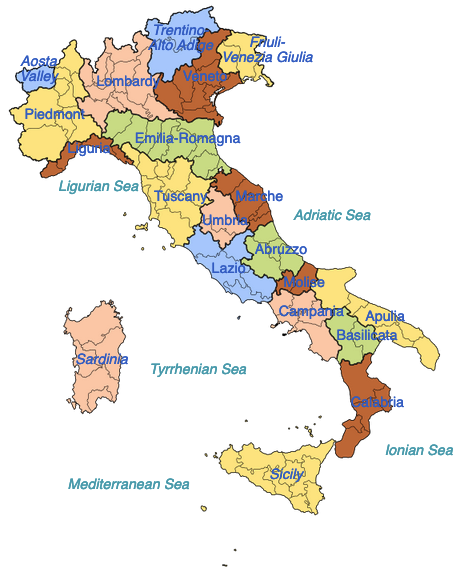
- Italy is constituted by 20 regions (regioni)-five of these regions having a special autonomous status that enables them to enact legislation on additional matters, 107 provinces (province) or metropolitan cities (città metropolitane), and 7,904 municipalities (comuni).
- Italy, whose territory largely coincides with the homonymous geographical region, is located in Southern Europe and it is also considered a part of western Europe, between latitudes 35 and 47 N, and longitudes 6 and 19 E. To the north, Italy borders France, Switzerland, Austria, and Slovenia and is roughly delimited by the Alpine watershed, enclosing the Po Valley and the Venetian Plain. To the south, it consists of the entirety of the Italian Peninsula and the two Mediterranean islands of Sicily and Sardinia (the two biggest islands of the Mediterranean), in addition to many smaller islands. The sovereign states of San Marino and the Vatican City are enclaves within Italy, while Campione d'Italia is an Italian exclave in Switzerland.
- Over 35% of the Italian territory is mountainous. The Apennine Mountains form the peninsula's backbone, and the Alps form most of its northern boundary, where Italy's highest point is located on Mont Blanc summit (Monte Bianco) (15,780 ft). Other worldwide-known mountains in Italy include the Matterhorn (Monte Cervino), Monte Rosa, Gran Paradiso in the West Alps, and Bernina, Stelvio and Dolomites along the eastern side.
- Italy has probably the highest level of faunal biodiversity in Europe, with over 57,000 species recorded, representing more than a third of all European fauna. The fauna of Italy includes 4,777 endemic animal species, which include the Sardinian long-eared bat, Sardinian red deer, spectacled salamander, brown cave salamander, Italian newt, Italian frog, Apennine yellow-bellied toad, Italian wall lizard, Aeolian wall lizard, Sicilian wall lizard, Italian Aesculapian snake, and Sicilian pond turtle. In Italy there are 119 mammals species, 550 bird species, 69 reptile species, 39 amphibian species, 623 fish species and 56,213 invertebrate species, of which 37,303 insect species.
- The flora of Italy was traditionally estimated to comprise about 5,500 vascular plant species. However, as of 2005, 6,759 species are recorded in the Data bank of Italian vascular flora. Italy has 1,371 endemic plant species and subspecies, which include Sicilian Fir, Barbaricina columbine, Sea marigold, Lavender cotton and Ucriana violet. Italy is a signatory to the Berne Convention on the Conservation of European Wildlife and Natural Habitats and the Habitats Directive both affording protection to Italian fauna and flora.
- The Italian wolf is the national animal of Italy, while the national tree of the country is the strawberry tree. The reasons for this choice are related to the fact that the Italian wolf, which inhabits the Apennine Mountains and the Western Alps, features prominently in Latin and Italian cultures, such as in the legend of the founding of Rome, while the green leaves, white flowers and red berries of the strawberry tree, which is native to the Mediterranean region, recall the colors of the flag of Italy.
- The climate of Italy is influenced by the large body of water of the Mediterranean Sea that surrounds Italy on every side except the north. These seas constitute a reservoir of heat and humidity for Italy. Winters can vary widely across the country with lingering cold, foggy and snowy periods in the north and milder, sunnier conditions in the south. Summers are hot across the country, except for at high altitude, particularly in the south.
- Italy has a major advanced capitalist mixed economy, ranking as the third-largest in the eurozone and the eighth-largest in the world by nominal GDP the ninth-largest national wealth and the third-largest central bank gold reserve. A founding member of the G7, the eurozone and the OECD, it is regarded as one of the world's most industrialized nations and a leading country in world trade and exports.
- The automotive industry is a significant part of the Italian manufacturing sector. The country boasts a wide range of acclaimed products, from compact city cars to luxury supercars such as Maserati, Pagani, Lamborghini, and Ferrari.
- The Banca Monte dei Paschi di Siena is the world's oldest or second oldest bank in continuous operation, depending on the definition, and the fourth-largest Italian commercial and retail bank.
- Italy is the world's largest wine producer, and one of the leading in olive oil, fruits (apples, olives, grapes, oranges, lemons, pears, apricots, hazelnuts, peaches, cherries, plums, strawberries and kiwifruits), and vegetables (especially artichokes and tomatoes). The most famous Italian wines are probably the Tuscan Chianti and the Piedmontese Barolo.
- Of the total surface area in agricultural use (forestry excluded), grain fields take up 31%, olive tree orchards 8.2%, vineyards 5.4%, citrus orchards 3.8%, sugar beets 1.7%, and horticulture 2.4%. The remainder is primarily dedicated to pastures (25.9%) and feed grains (11.6%).
- Italy was the first country in the world to build motorways, the so-called autostrade, reserved for fast traffic and for motor vehicles only.
- Through the centuries, Italy has fostered the scientific community that produced many major discoveries in physics and other sciences. During the Renaissance Italian polymaths such as Leonardo da Vinci (1452–1519), Michelangelo (1475–1564) and Leon Battista Alberti (1404–1472) made contributions in a variety of fields, including biology, architecture, and engineering. Galileo Galilei (1564–1642), an astronomer, physicist, engineer, and polymath, played a major role in the Scientific Revolution. He is considered the "father" of observational astronomy, modern physics, the scientific method, and modern science.
- Italy is the fifth most visited country in international tourism, with a total of 52.3 million international arrivals in 2016. Factors of tourist interest in Italy are mainly culture, cuisine, history, fashion, architecture, art, religious sites and routes, wedding tourism, naturalistic beauties, nightlife, underwater sites and spas.
- At the beginning of 2020, Italy had 60,317,116 inhabitants. In 2021, Italy had about 5.17 million foreign residents, making up 8.7% of the total population.
- Italy's official language is Italian. Around the world there are an estimated 64 million native Italian speakers and another 21 million who use it as a second language.
- Italy has been historically characterized by the dominance of Catholicism (68% are Christians overall).
- Bologna University, founded in 1088, is the oldest university in continuous operation, as well as one of the leading academic institutions in Italy and Europe.
- Life expectancy in the country is 80 for males and 85 for females, placing the country 5th in the world.
- The most popular sport in Italy is football. Other popular team sports in Italy include basketball, volleyball and rugby. Italy has a long and successful tradition in individual sports as well. Bicycle racing is a familiar sport in the country. Motorsports are also extremely popular in Italy. Italy has won, by far, the most MotoGP World Championships. Historically, Italy has been successful in the Olympic Games, taking part from the first Olympiad and in 47 Games out of 48, not having officially participated in the 1904 Summer Olympics.
- Italian fashion has a long tradition. Milan, Florence and Rome are Italy's main fashion capitals. Major Italian fashion labels, such as Gucci, Armani, Prada, Versace, Valentino, Dolce & Gabbana, Missoni, Fendi, Moschino, Max Mara, Trussardi, and Ferragamo, to name a few, are regarded as among the finest fashion houses in the world. Jewelers like Bvlgari, Damiani and Buccellati have been founded in Italy. Also, the fashion magazine Vogue Italia, is considered one of the most prestigious fashion magazines in the world.
- Italian cuisine relies heavily on traditional products; the country has a large number of traditional specialties protected under EU law. Cheese, cold cuts and wine are central to Italian cuisine, with many regional declinations and Protected Designation of Origin or Protected Geographical Indication labels, and along with pizza and coffee (especially espresso) form part of Italian gastronomic culture.
EtymologyHypotheses for the etymology of the name Italia are numerous
One is that it was borrowed via Ancient Greek from the Oscan Viteliu 'land of calves' (cf. Lat vitulus "calf", Umb vitlo "calf"). Ancient Greek historian Dionysius of Halicarnassus gives this account together with the legend that Italy was named after the king Italus (who ruled the southern area of now Italy).
















